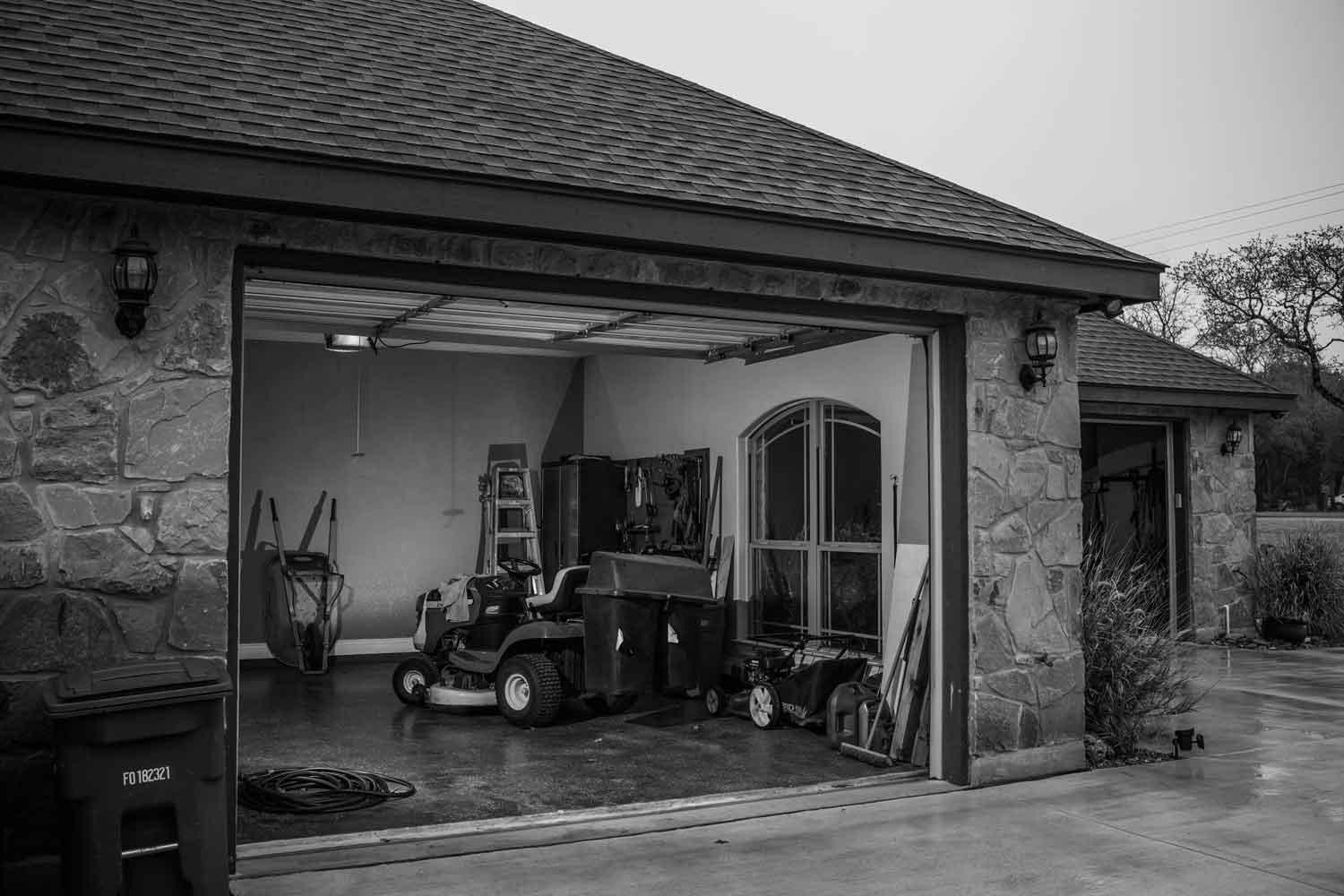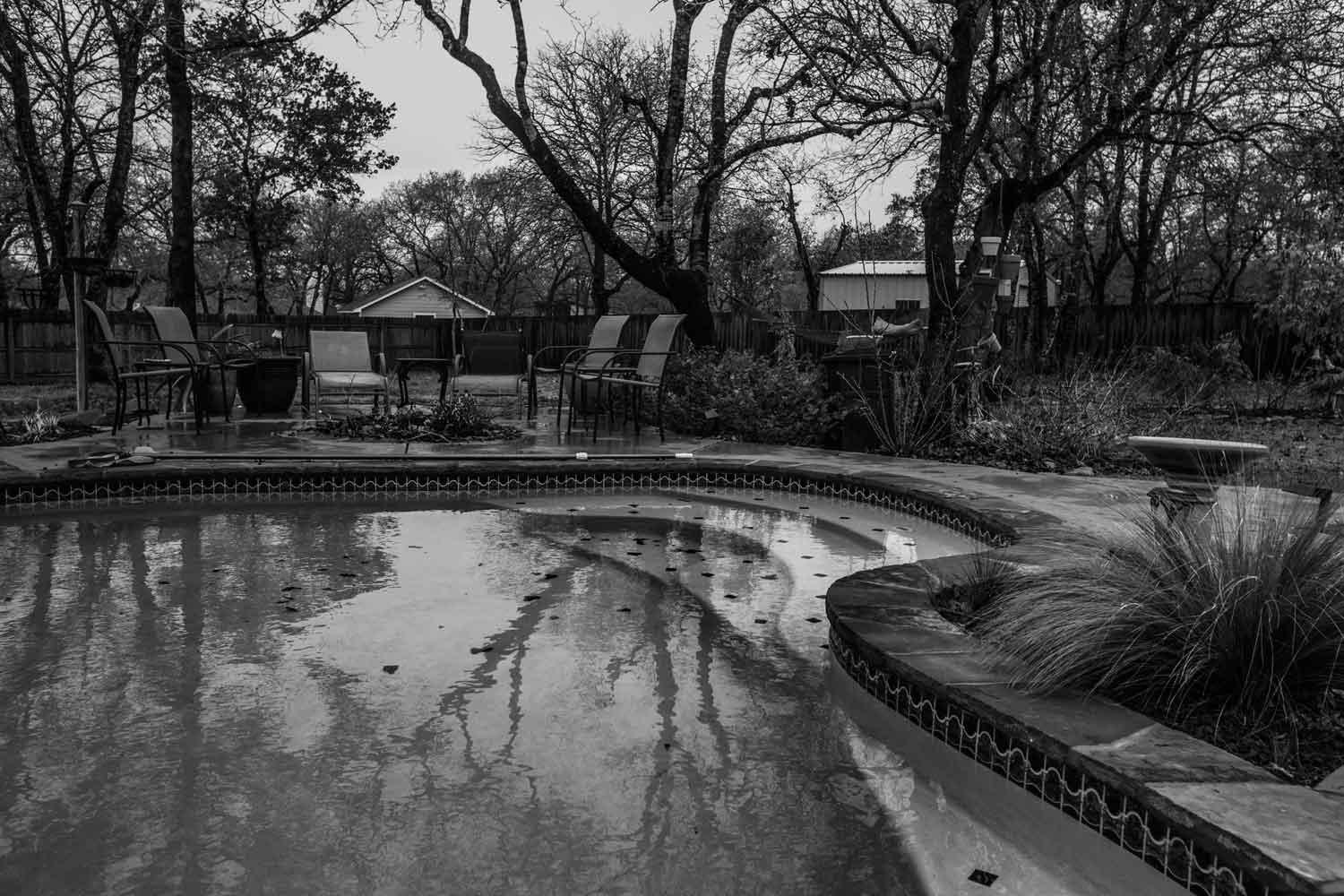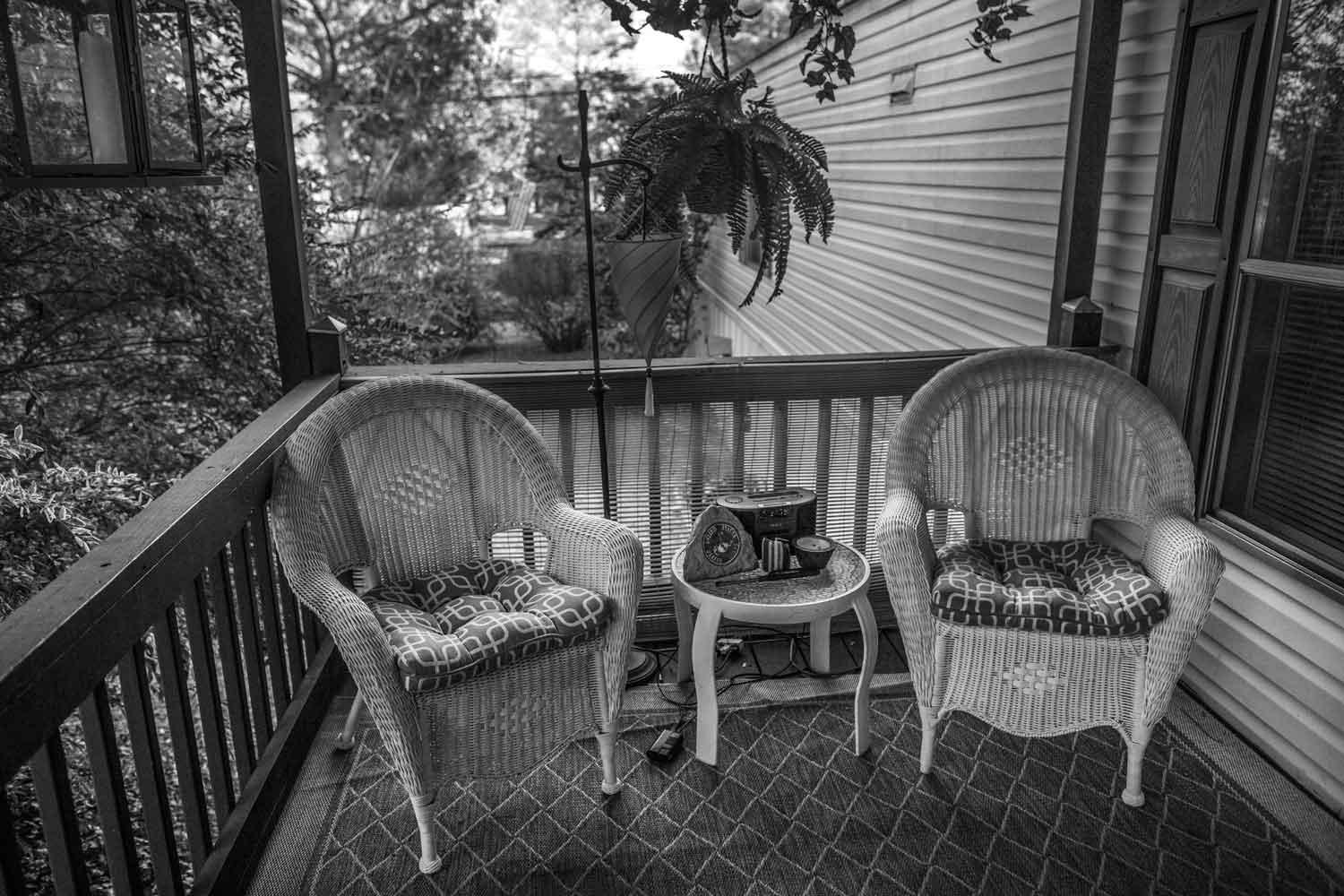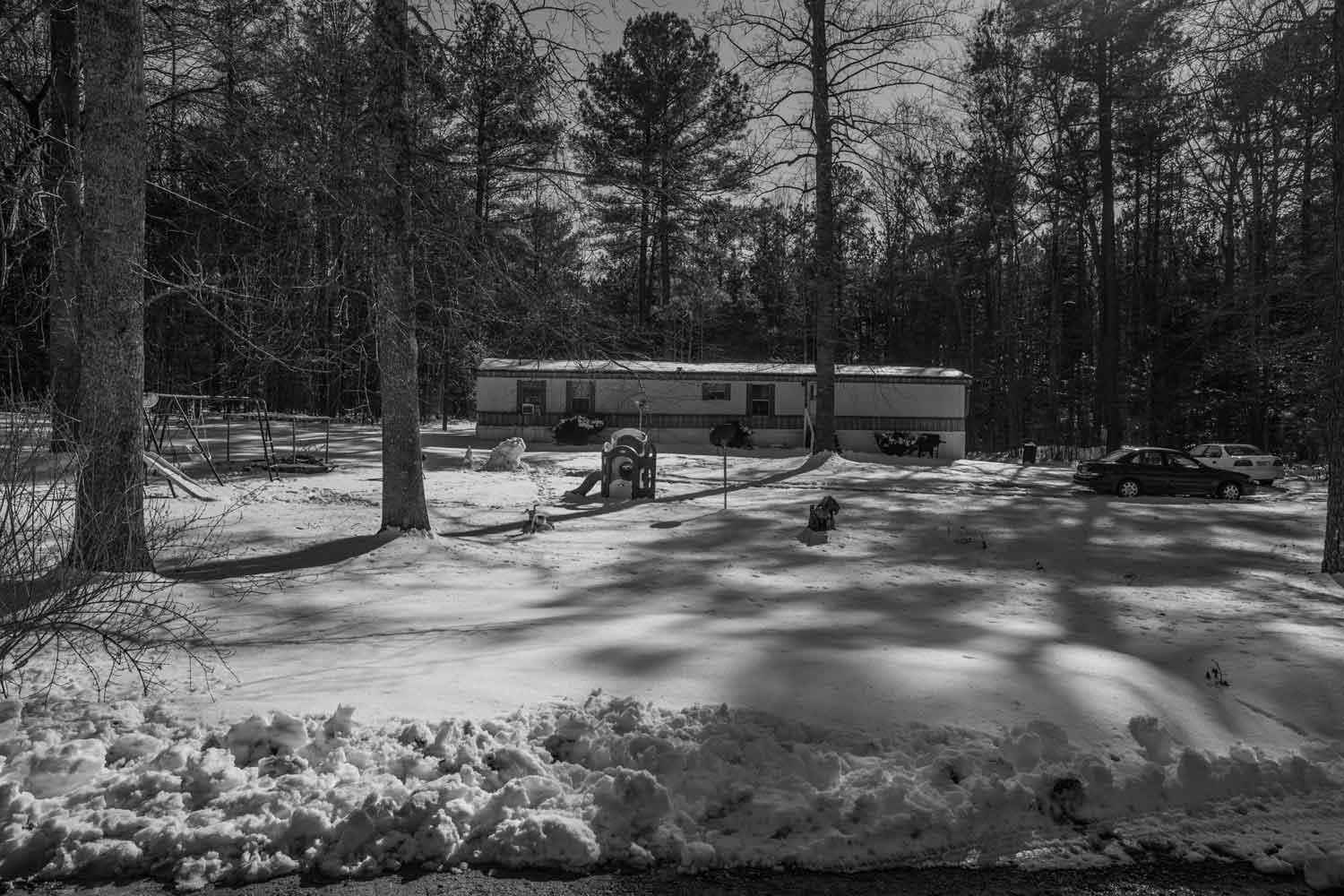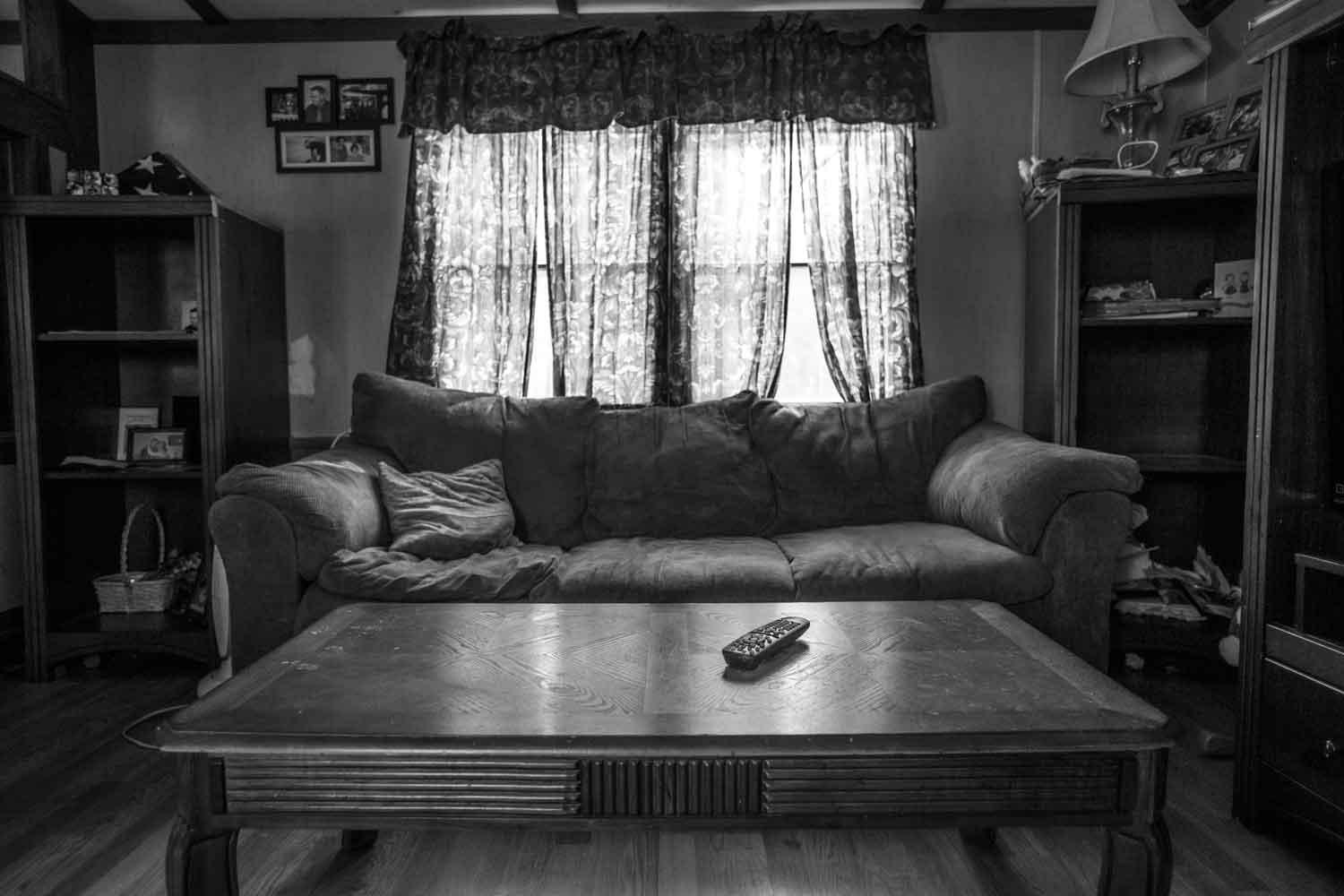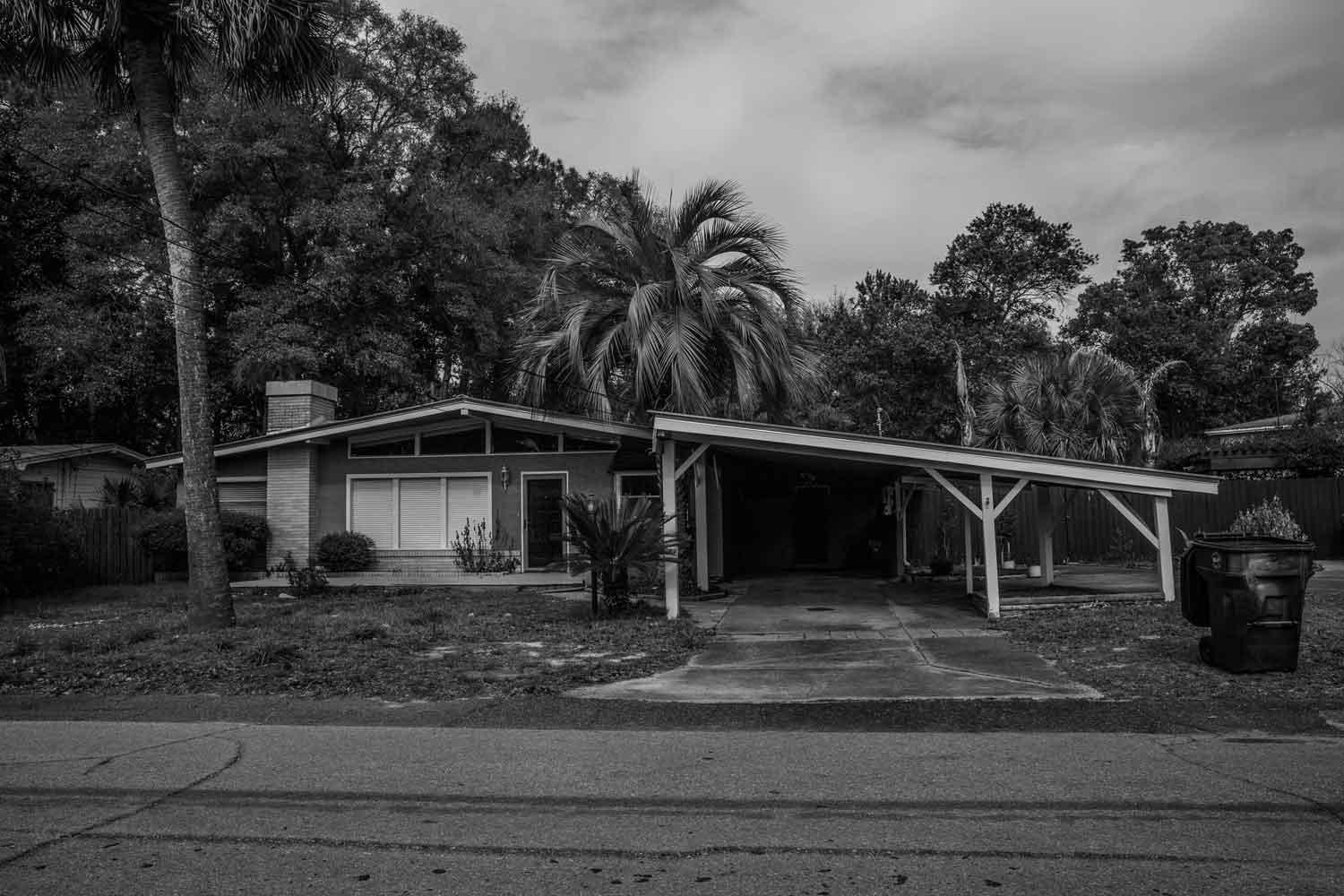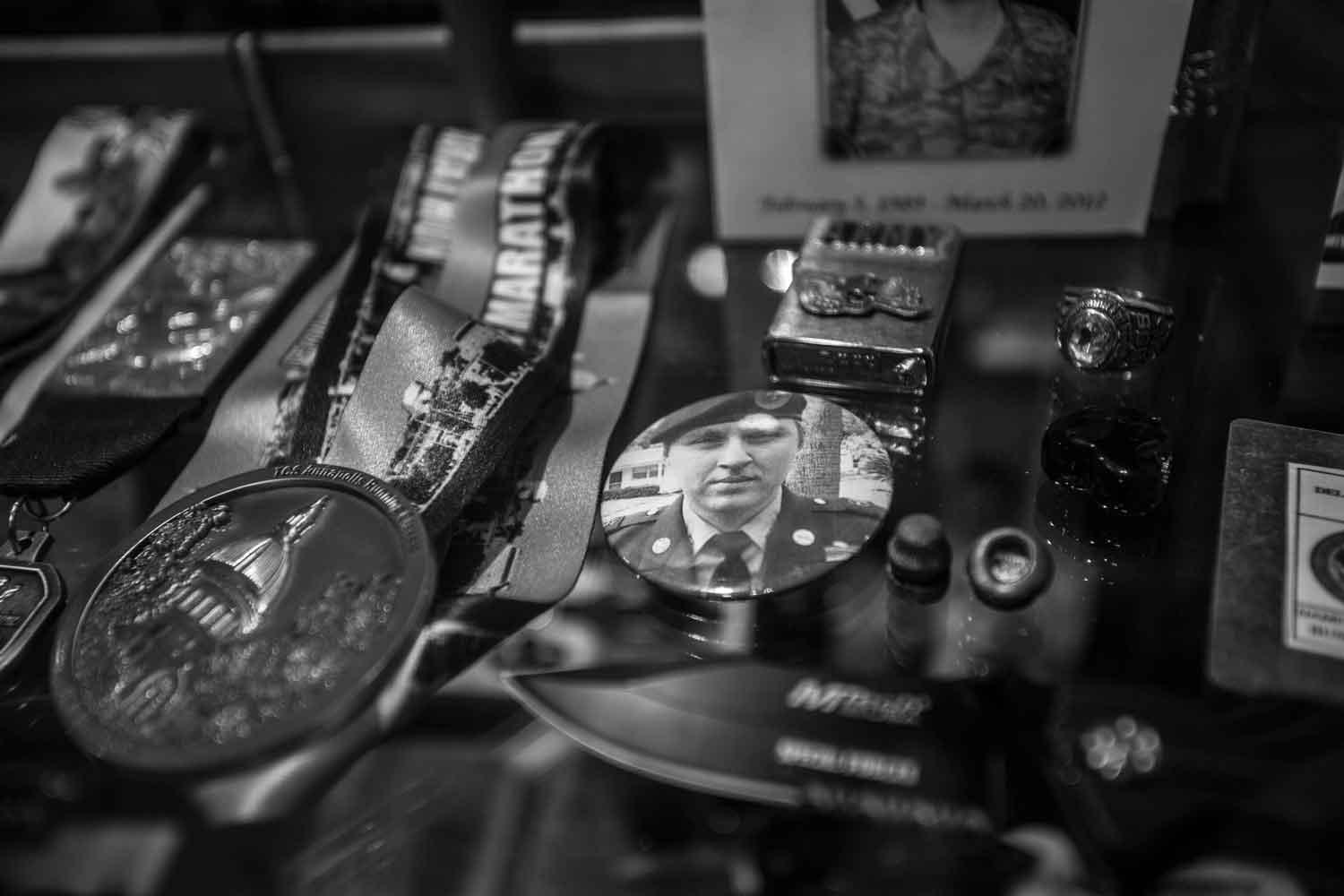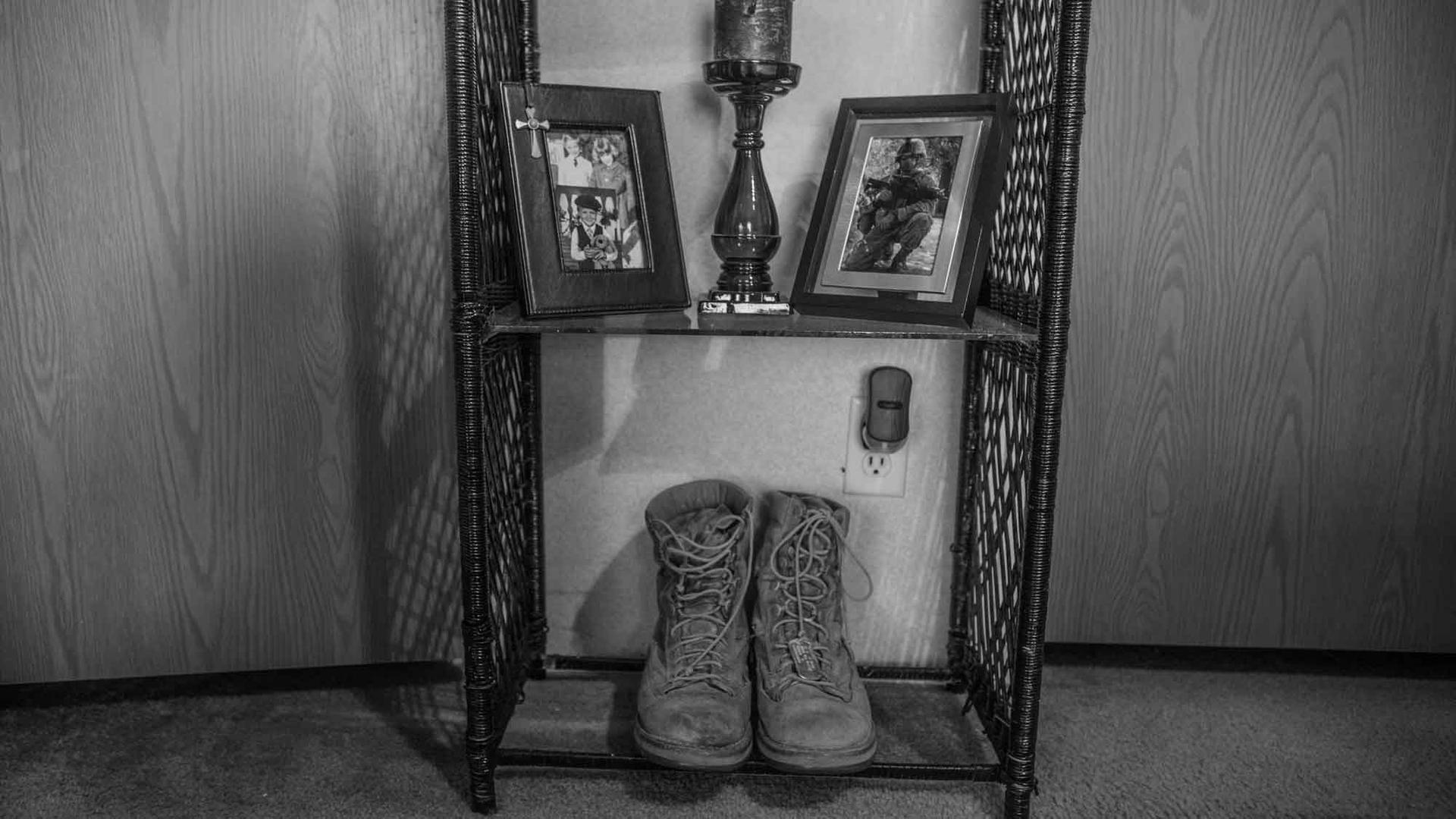Brandon Ladner. Pelham, Alabama. Ladner's Marine Corps boots sit on a small shelf in his bedroom. Ladner was a US Marine Corps veteran who fought in Afghanistan's Helmand Province. He shot himself inside his living room. The bullet remains lodged in the ceiling of the home where his mother Renee now lives.
After decades of war reporting, photojournalist David Guttenfelder came home and realized that he had only covered one side of the story.
“I spent pretty much my entire adult life living outside of the United States and I was a combat photographer," Guttenfelder says. "I spent the entire Afghanistan war working in Afghanistan, working in Iraq, working with servicemen and women.”
But he wondered what was happening when those men and women came back to an entirely different life at home. After years of life on the battlefield, how were they adjusting to their lives after war?
“I discovered this shocking statistic: 22 American veterans [were] killing themselves every day in the United States,” Guttenfelder says. It’s important to note that exact statistic has been debated. But no one disputes that veteran suicide rates are rising far too quickly.
Guttenfelder teamed up with Mission 22, an advocacy campaign to raise awareness about the high rate of suicide among veterans. Their slogan is stark: "The American Military's Deadliest Battleground Isn't Some Remote Stretch of Desert Across the Globe. It's Here at Home."
Guttenfelder visited with five families who had lost a loved one to suicide.
“I went to these homes to meet the families and to photograph the spaces where these suicides happened, and to try to give meaning to this different kind of battlefield," he says "But most of the time when I was there I wasn’t taking pictures. I was sitting on their couches and talking about their sons and trying to help them understand.”
Here are some of the photos Guttenfelder took at the homes of these veterans.
